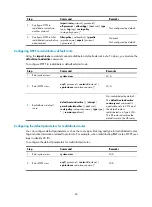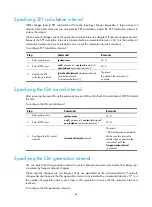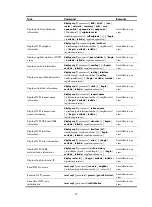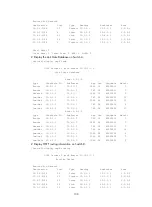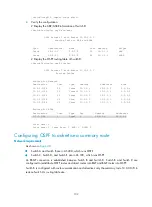
91
Step Command
Remarks
1.
Enter system view.
system-view
N/A
2.
Enter OSPF view.
ospf
[
process-id
|
router-id
router-id
|
vpn-instance
vpn-instance-name
] *
N/A
3.
Enable the advertisement and
reception of opaque LSAs.
opaque-capability enable
Optional.
Disabled by default.
Configuring OSPF to give priority to receiving and processing
hello packets
To ensure OSPF runs properly, a router receives and processes hello packets and other protocol packets
at the same time. When the router has established neighbor relationships with multiple routers, and the
routing table size is big, the router must receive and process large numbers of packets. In this case, you
can configure OSPF to give priority to receiving and processing hello packets to ensure stable neighbor
relationships.
To configure OSPF to give priority to receiving and processing hello packets:
Step Command
Remarks
1.
Enter system view.
system-view
N/A
2.
Configure OSPF to
give priority to
receiving and
processing hello
packets.
ospf packet-process prioritized-treatment
Not configured by default.
Configuring the LSU transmit rate
Sending large numbers of LSU packets affects router performance and consumes too much network
bandwidth. You can configure the router to send LSU packets at a proper interval and limit the maximum
number of LSU packets sent out of an OSPF interface each time.
To configure the LSU transmit rate:
Step Command
Remarks
1.
Enter system view.
system-view
N/A
2.
Enter OSPF view.
ospf
[
process-id
|
router-id
router-id
|
vpn-instance
vpn-instance-name
] *
N/A
3.
Configure the LSU
transmit rate.
transmit-pacing interval
interval
count
count
Optional.
By default, an OSPF interface
sends up to three LSU packets
every 20 milliseconds.







